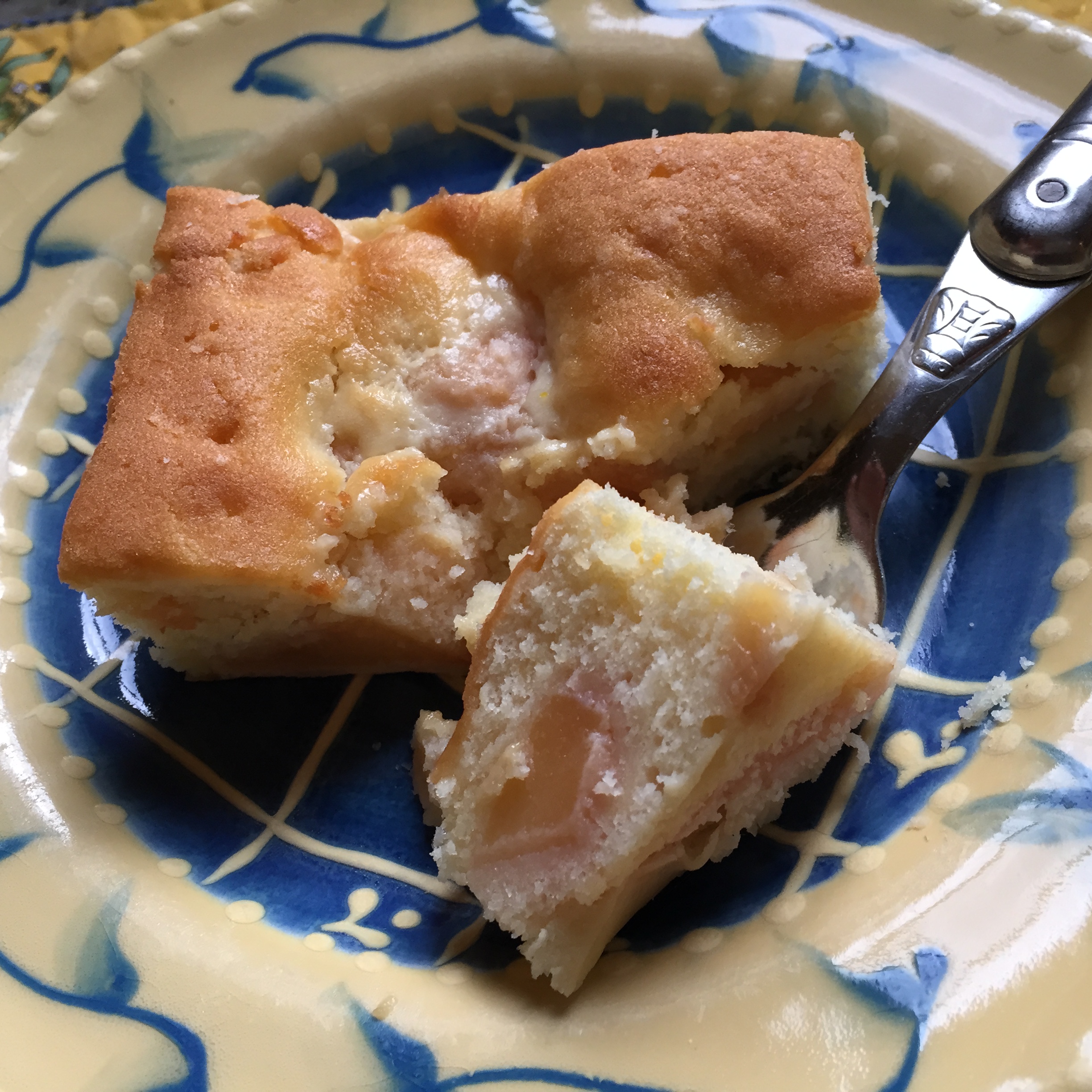Lovely quince
I was at the farmers’ market the other day and couldn’t resist buying some of the lovely quince on display. Although they are a fall fruit (generally seen October to December in the Northeast), they are not as readily available as some others, for example, apples to which they are related. Quince are quite pretty and very fragrant when ripe though they are rarely eaten raw as their flesh is extremely hard, pithy and tannic in its uncooked state.
The joy of quince comes when you cook them. Naturally high in pectins (a thickening agent), they lend themselves to jams and marmalades—think membrillo the delicious Spanish quince paste that adorns cheese plates around the world. I’ll be frank. I didn’t really purchase enough to make jam. I was simply enjoying their pretty yellow skin, gnarled leaves and fragrant perfume. I had no real idea what I was going to do with them. Then inspiration arrived by way of a friend and fellow chef. Jennifer McIlvane is an American Chef who lives in Umbria with her Italian winemaker husband. She posted a photo of some beautiful quince on her Facebook paged and basically shamed me in to using mine.
I decided to bake them and use them in a cake. I must admit I have not cooked a lot of quince, but I peeled, quartered and seeded my 5 large quince as fast as their tough skin and flesh would allow, dropping them immediately into lemon water to prevent them from browning. Once that was done, I left enough lemon water in the pan to come half way up the fruit, and then I added 2/3 cup of sugar, 5 cloves, a teaspoon of salt and half a star anise. I baked them in a 350°F oven for an hour until they were fork tender, turning them a couple of times in the process.
Karina Lefevre, Domaine Sulauze, Miramas, France
I didn’t want my cake to be light and fluffy, but I also didn’t want something heavy. I remember Karina Lefevre and all of the wonderful cakes she made for the harvest workers when I was cooking with her at Domaine Sulauze in the fall of 2013. She had an easy basic recipe (the French version of a pound cake) and she just varied the fruits and flavoring agents—using apples one day and poppy seeds the next. You get the idea. It worked perfectly with the quince. The buttery lightly sweet cake was a perfect foil for the tart lightly orange colored quince.
I particularly love the fact that this cake combined simple seasonal advice from two winemakers’ wives. Two birds—one cake!
Quince Cake
Quince Cake
Yield: One cake (8 in. x 8 in.)
Wine pairing: Vin Santo or Muscat Beaumes de Venise
Ingredients:
For the Quince:
4-5 large quince
Juice of one large lemon
2 cups water
2/3 cup granulated sugar
1 tspn. kosher salt
5 cloves
½ star anise
For the cake:
2 sticks softened butter
8 oz. sugar
4 large eggs
8 oz. flour
½ tspn. Kosher salt
Pan spray
Extra flour
What you’ll need:
Nonreactive bowl large enough to hold the quince
Nonreactive baking pan large enough to hold the quince
8 in. x 8 in. square cake pan
Electric mixer
Rubber spatula
Toothpick
Timing:
Prep Time: ½ hour to peel, quarter and seed the quince
15 minutes make the cake batter
Cook Time: 1 hour for the quince
40 minutes for the cake
Preheat the oven to 350°F.
For the quince:
Squeeze the lemon into the water in your large bowl.
Quarter the quince, cut out the seeds and peel the quarters and place them in the lemon water. Repeat until all quince are done.
Transfer the quince slices to your baking pan. Add sugar, salt, cloves, star anise and enough lemon water to come half way up the fruit.
Bake in a 350°F oven until the quince quarters are soft, turning once or twice in the process to coat the quince.
When they are finished you may store them covered in their own syrup in a jar in the refrigerator for a week.
For the cake:
Coat the cake dish with pan spray and flour to prevent the cake from sticking.
Slice 1-1/2 to 2 cups of the quince in thinner slices.
Cream the butter until it is soft and smooth. Add the sugar and mix it until it is fluffy and the sugar has dissolved. It will be much paler than before. With the mixer running add one egg at a time. When all eggs have been incorporated and the batter is fluffy again, stop the mixer and add one quarter of the flour and then turn the mixer on slowly and mix in the flour. Repeat until all the flour has been incorporated.
Remove the mixing bowl from the mixer and fold in the quince pieces. Place the quince batter in the cake pan being careful to smooth it as best you can with a spatula.
Bake in a 350°F oven until the cake springs back to the touch. After 30 minutes, test for doneness by piercing the center of the cake with a toothpick. If the toothpick comes back with no crumbs, your cake is done, if not, return it to the oven and continue baking it until the toothpick test comes back clean.


